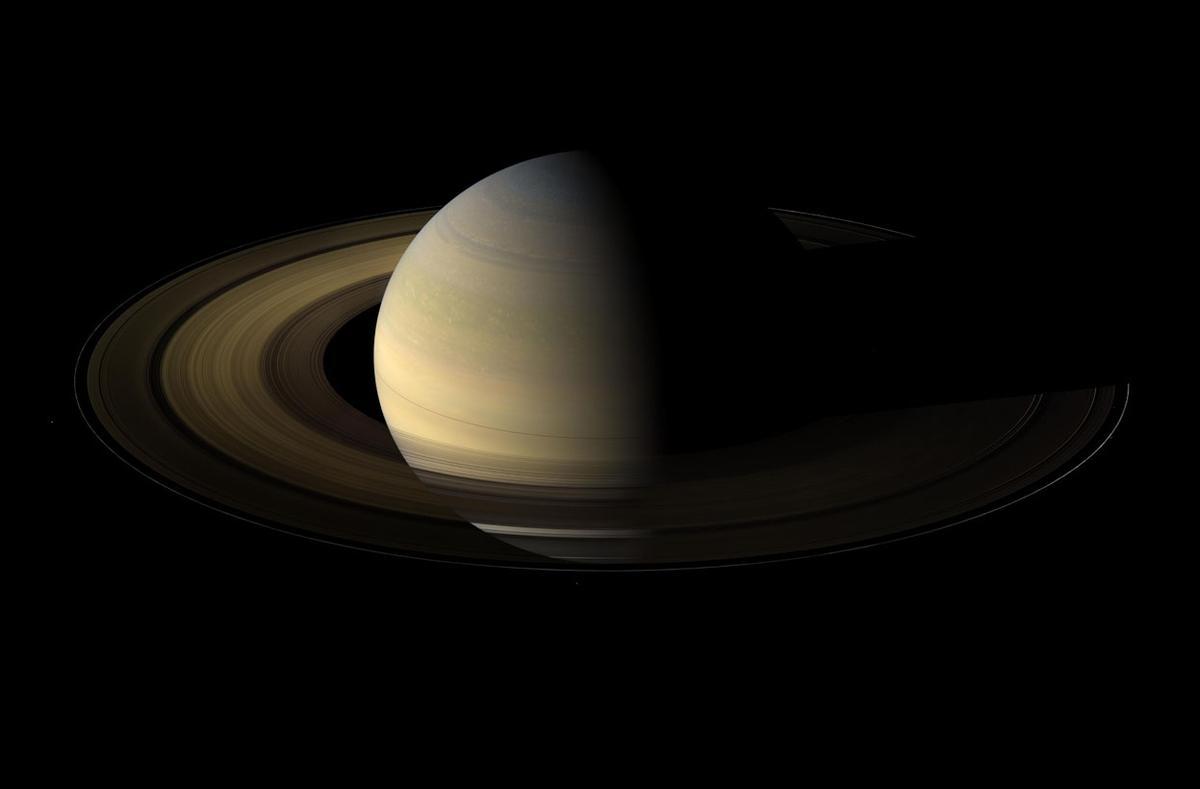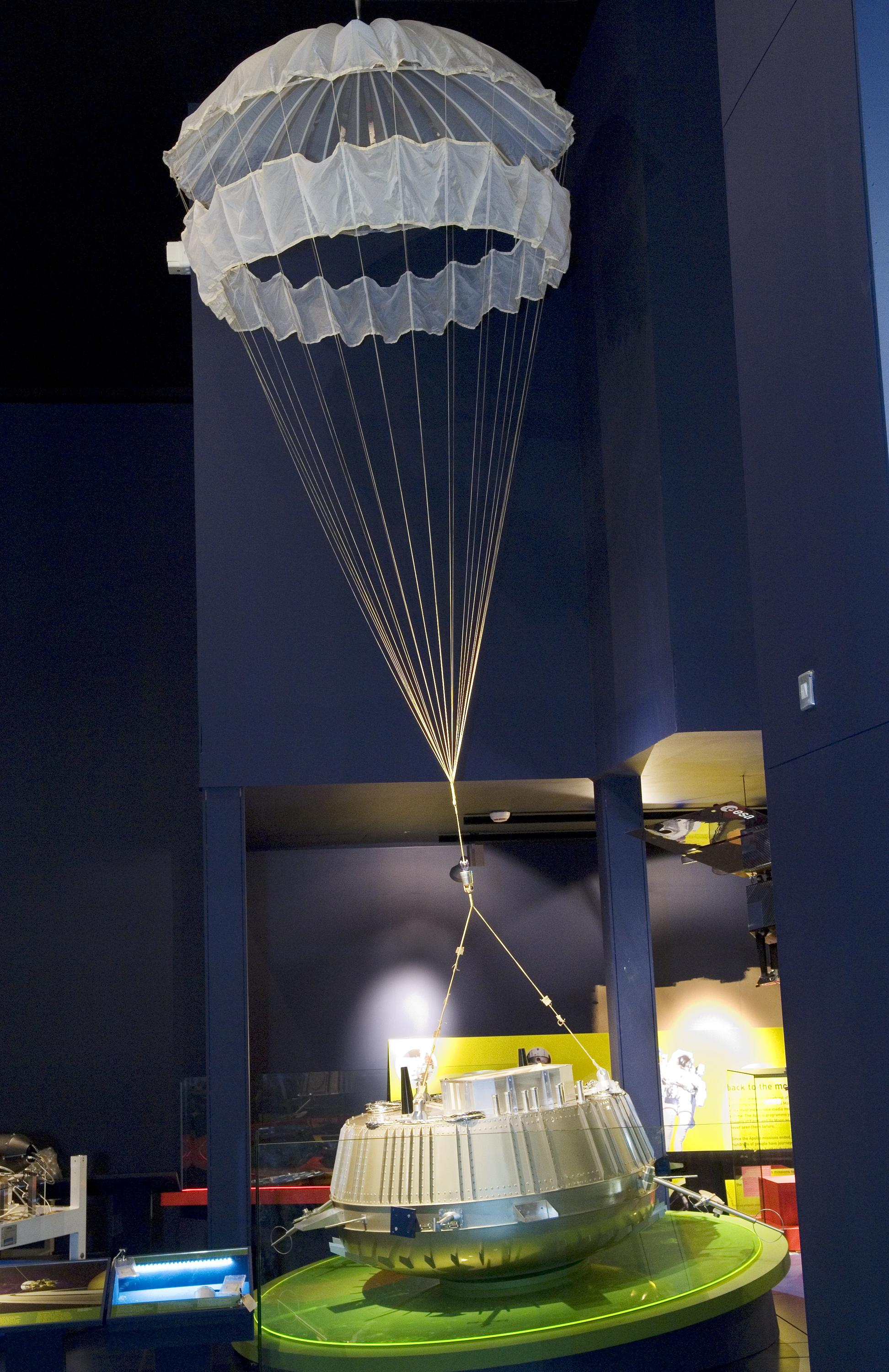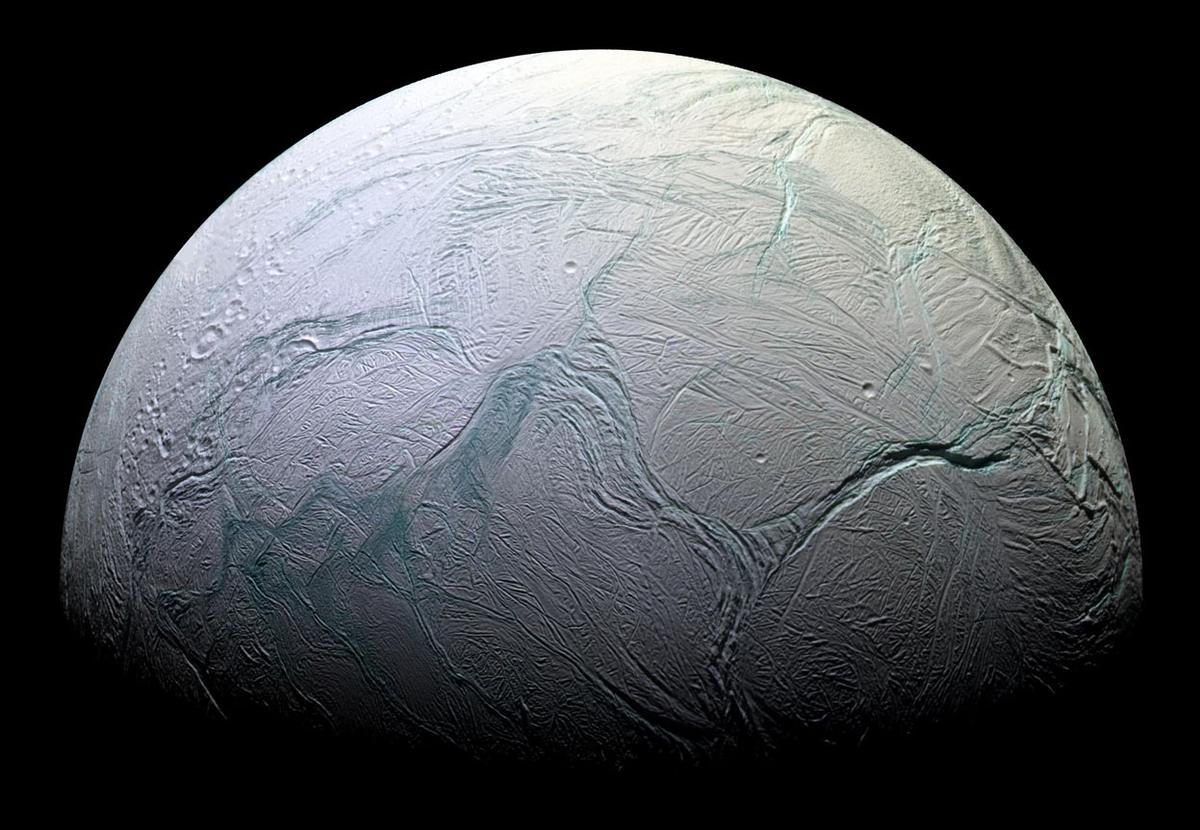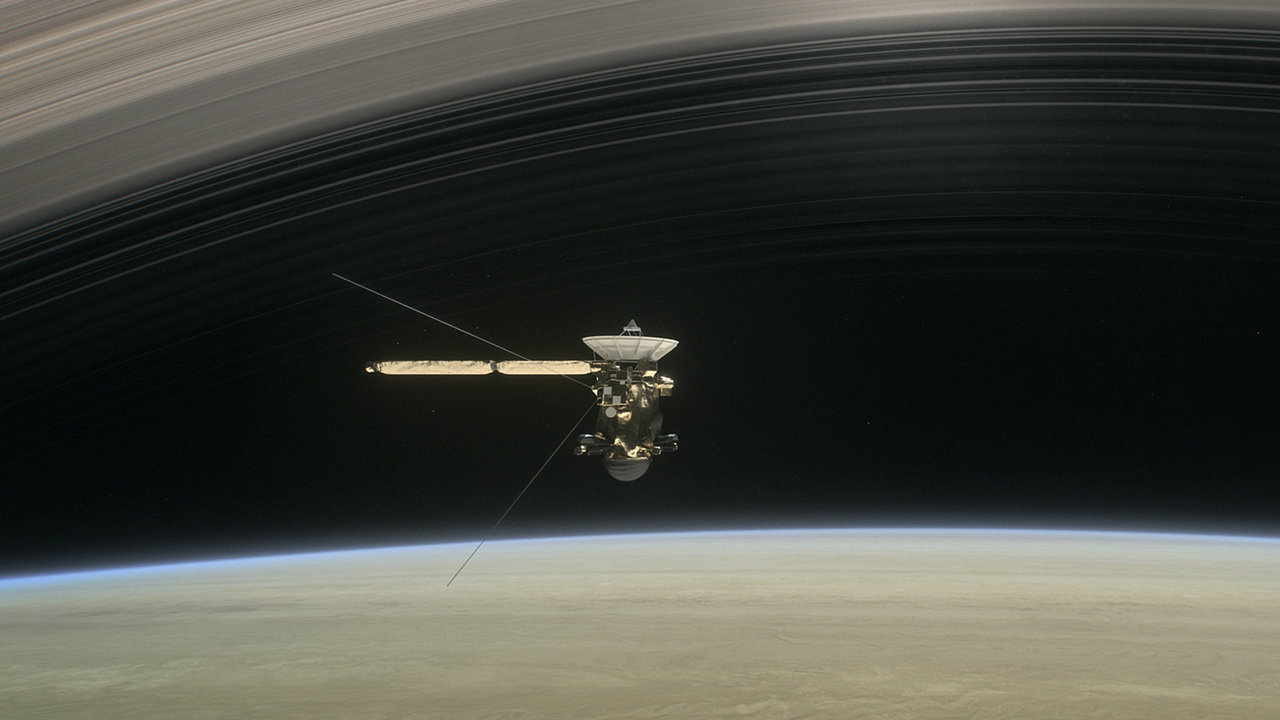In early September 2017 the Cassini spacecraft executed its final manoeuvre, sending it plunging into Saturn’s atmosphere on Friday 15 September. During its descent, it will burn up and disintegrate like a meteor, bringing its remarkable twenty-year journey to an end.

A collaborative effort between NASA, the European Space Agency and the Italian Space Agency, Cassini-Huygens launched twenty years ago on 15 October 1997. Its mission was to explore Saturn and its moons and it has been transmitting data since it reached the ringed planet in June 2004.

When it launched in January 2005 Cassini also carried a separate probe, Huygens, designed by the European Space Agency. Huygens landed on Titan – Saturn’s and the Solar System’s largest moon. Before its battery died, it sent back images and data of Titan for more than ninety minutes.
Visitors can see a replica of Huygens on display at the Science Museum in the Exploring Space Gallery. It depicts Huygens descending through Titan’s atmosphere, with the second of its three parachutes deployed to steady its descent.
Since Cassini arrived at Saturn it has been using Titan’s gravity almost every month to manoeuvre itself into different orbits around the plant. This has allowed spacecraft to examine Saturn and its rings from different angles and closer than ever before.
Extended twice, Cassini’s Saturn tour has made key discoveries during its thirteen-year mission, including finding evidence of a global ocean with evidence of hydrothermal activity (possibly needed to support life) on the moon, Enceladus, as well as seas of liquid methane on Titan. It has also observed seasonal changes on both Saturn and Titan.

In the Exploring Space Gallery, visitors can see a prototype of the magnetic field sensor used on Cassini to monitor the magnetic fields of Saturn and its moons.The huge volume of data Cassini has produced will continue to yield scientific discoveries for decades to come.
In April 2017, Cassini began a series of daring dives between the gaps in Saturn’s rings, sending back never-before-seen close-up images of them and the planet. Cassini’s ‘Grand Finale’ comes to a dramatic end on 15 September when it will plunge into Saturn’s upper atmosphere, breaking apart and then burning up.

Scientists decided on this fiery end to protect Saturn’s moons from the risk of contamination by any Earth microbes that may be clinging to the spacecraft. This will keep the moons pristine for future exploration. Cassini will continue to transmit vital data back to Earth until the bitter end, using up the last of its onboard propellant to keep its antenna pointed at Earth.
And so, it is with a proud, yet heavy heart that we at the Science Museum salute the Cassini spacecraft one final time on Friday as it sacrifices itself in the name of science. Your legacy will live on in our collections for future generations.
Farewell, Cassini.